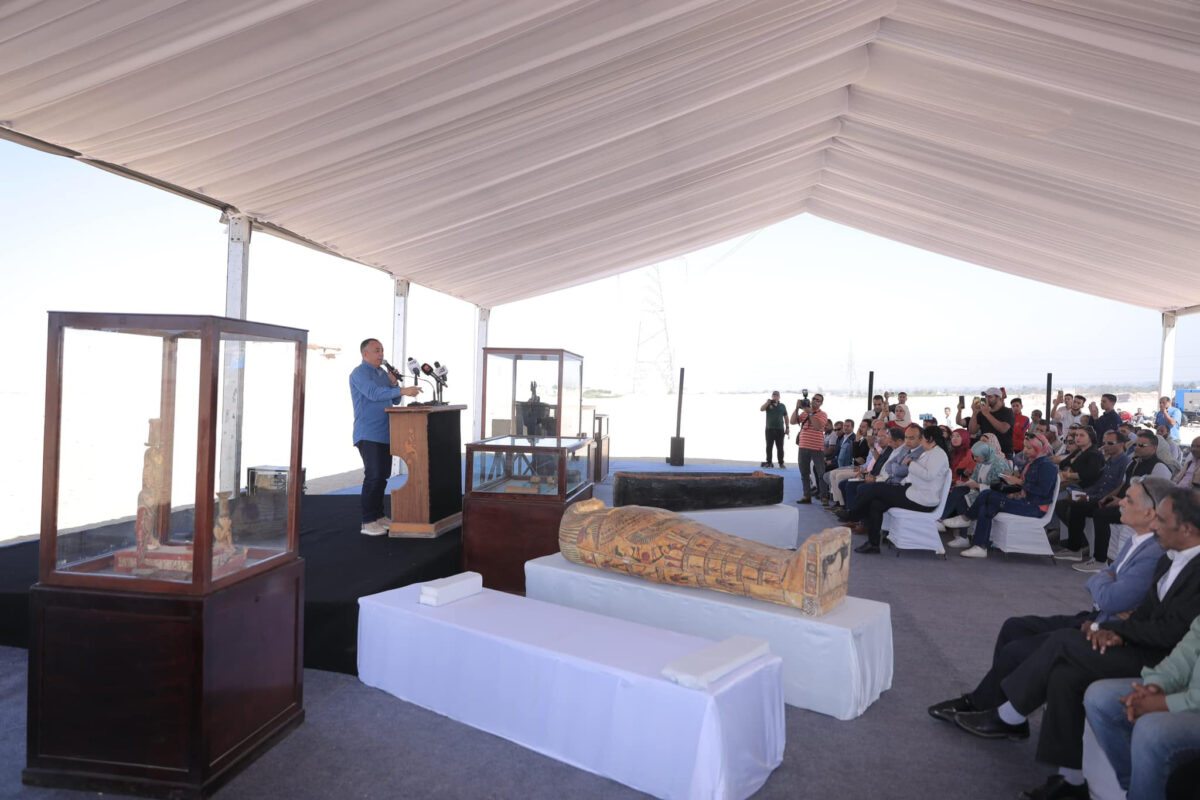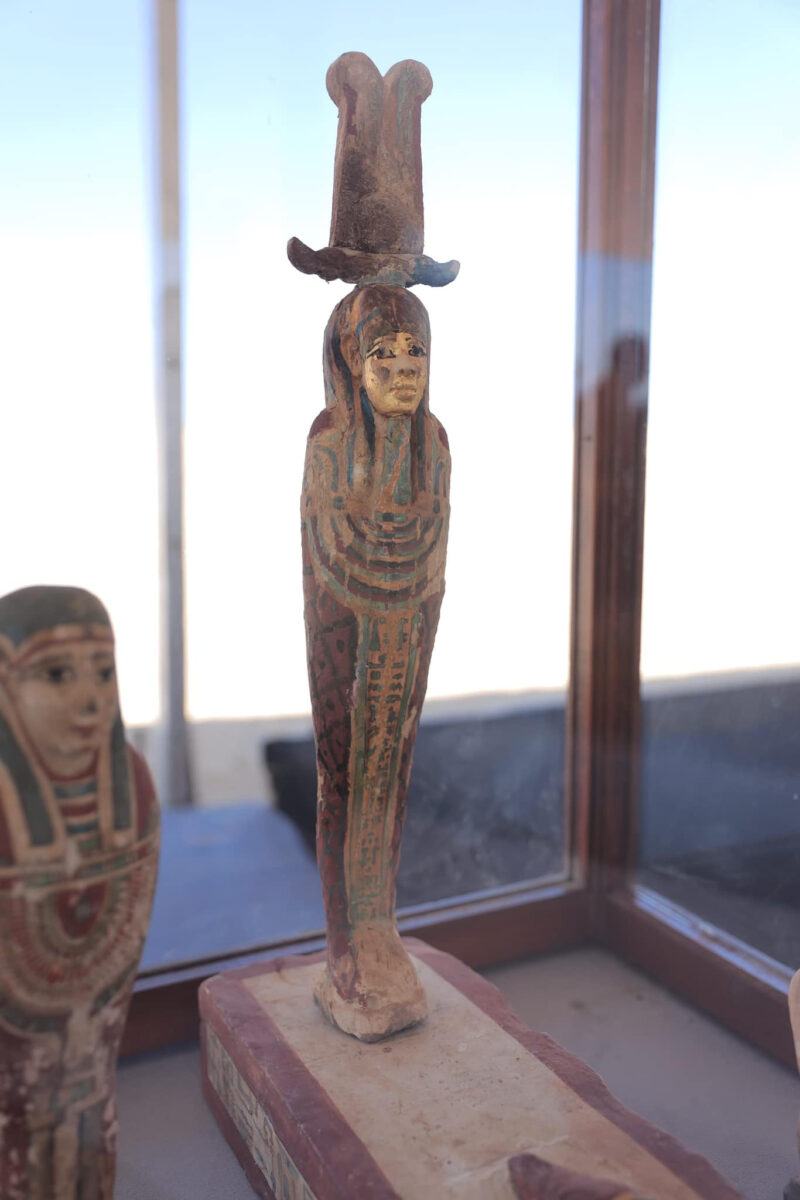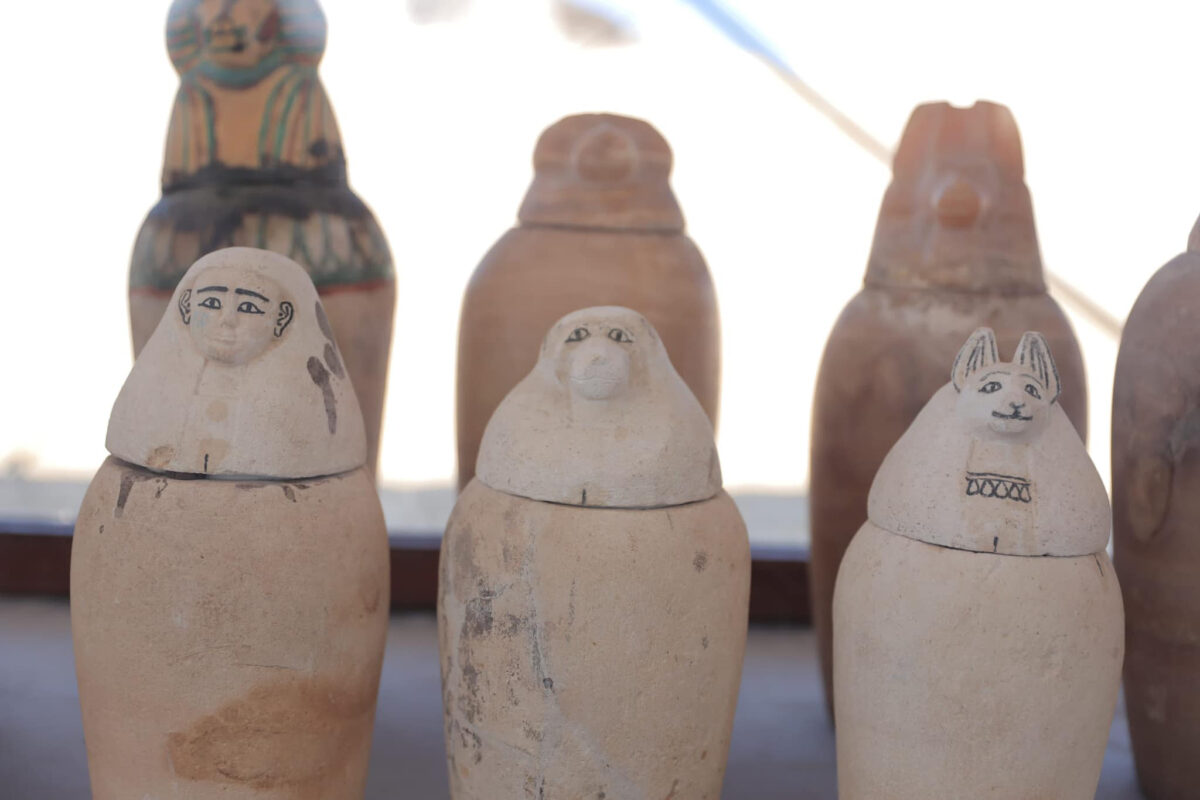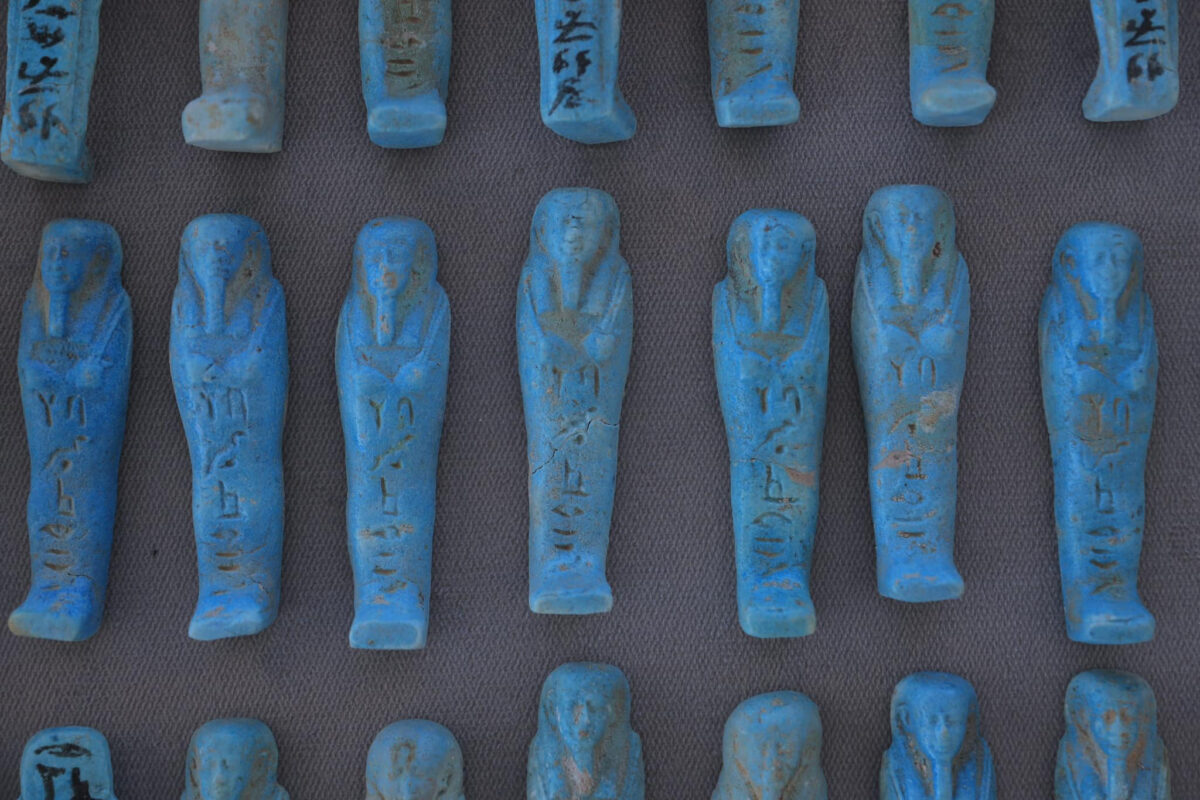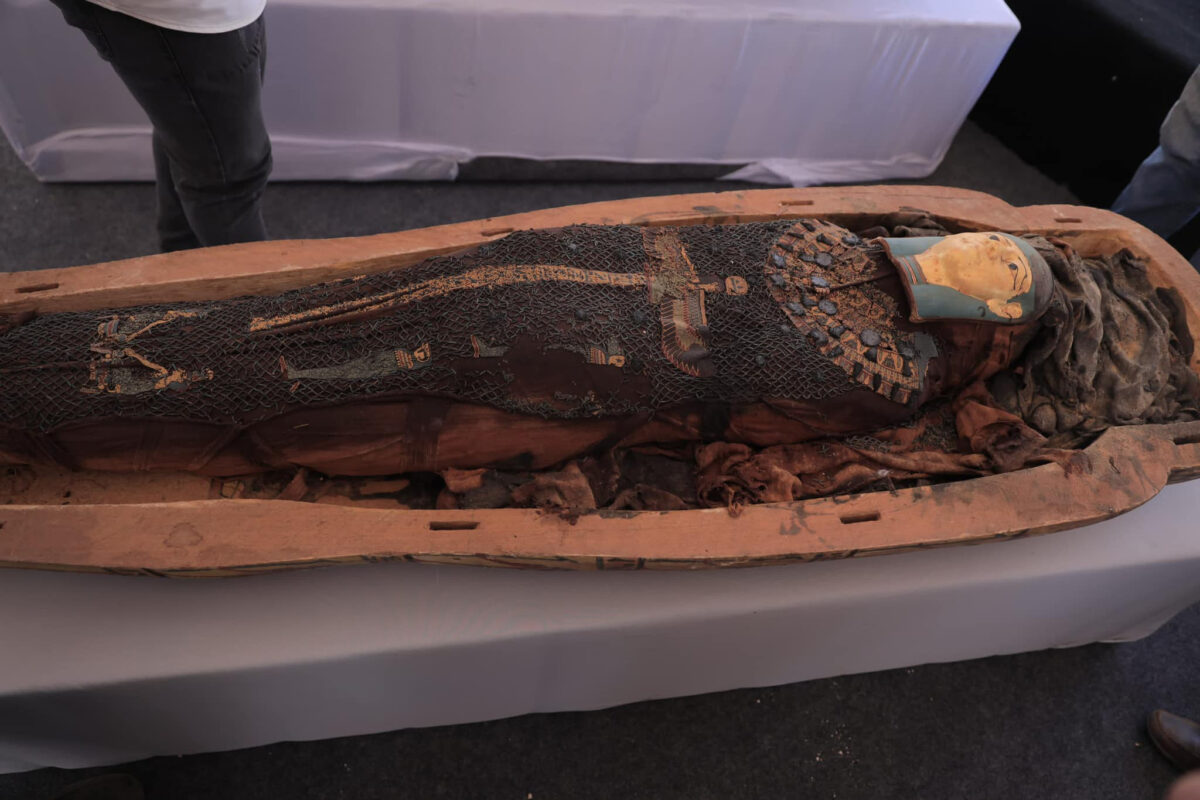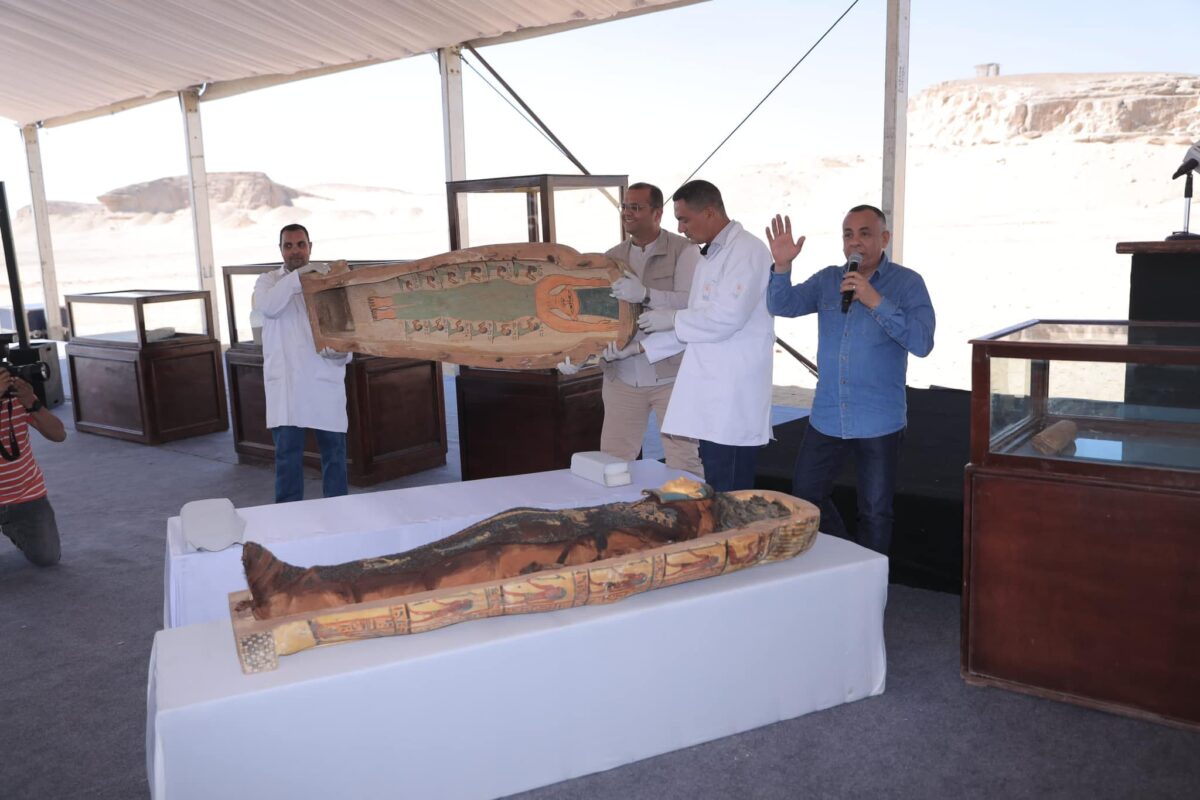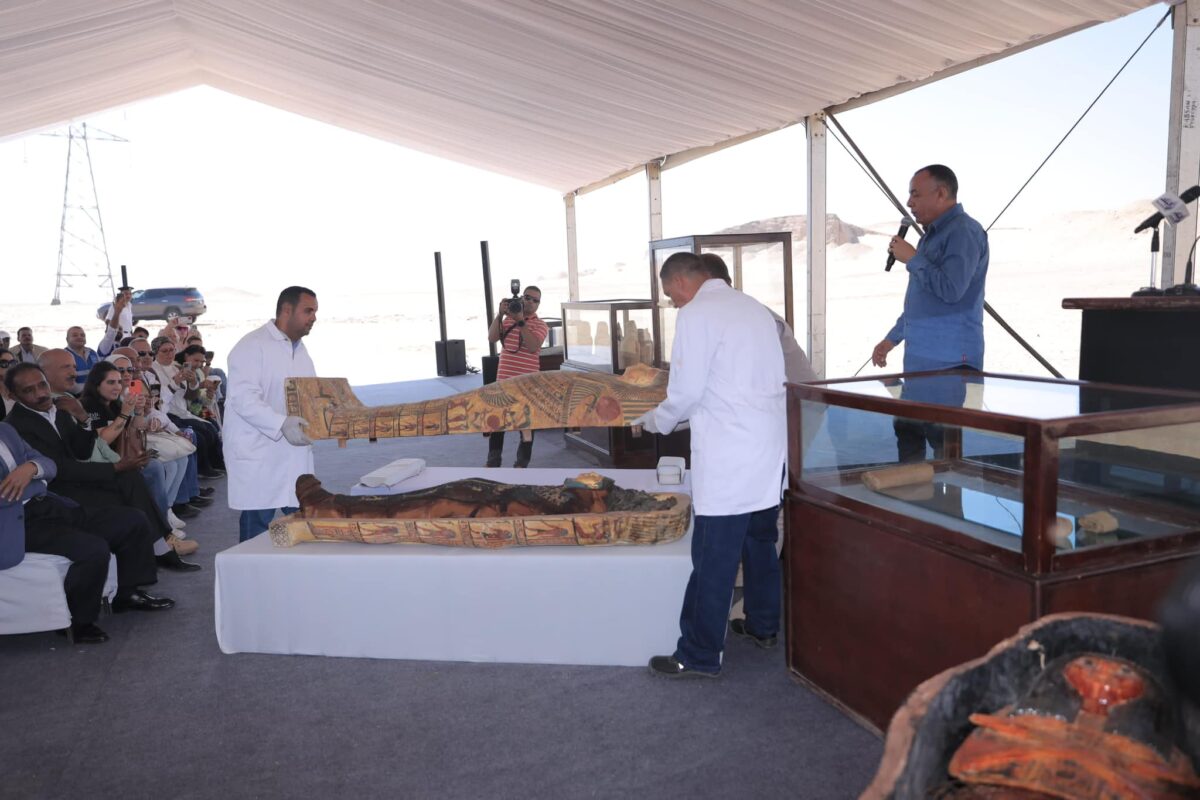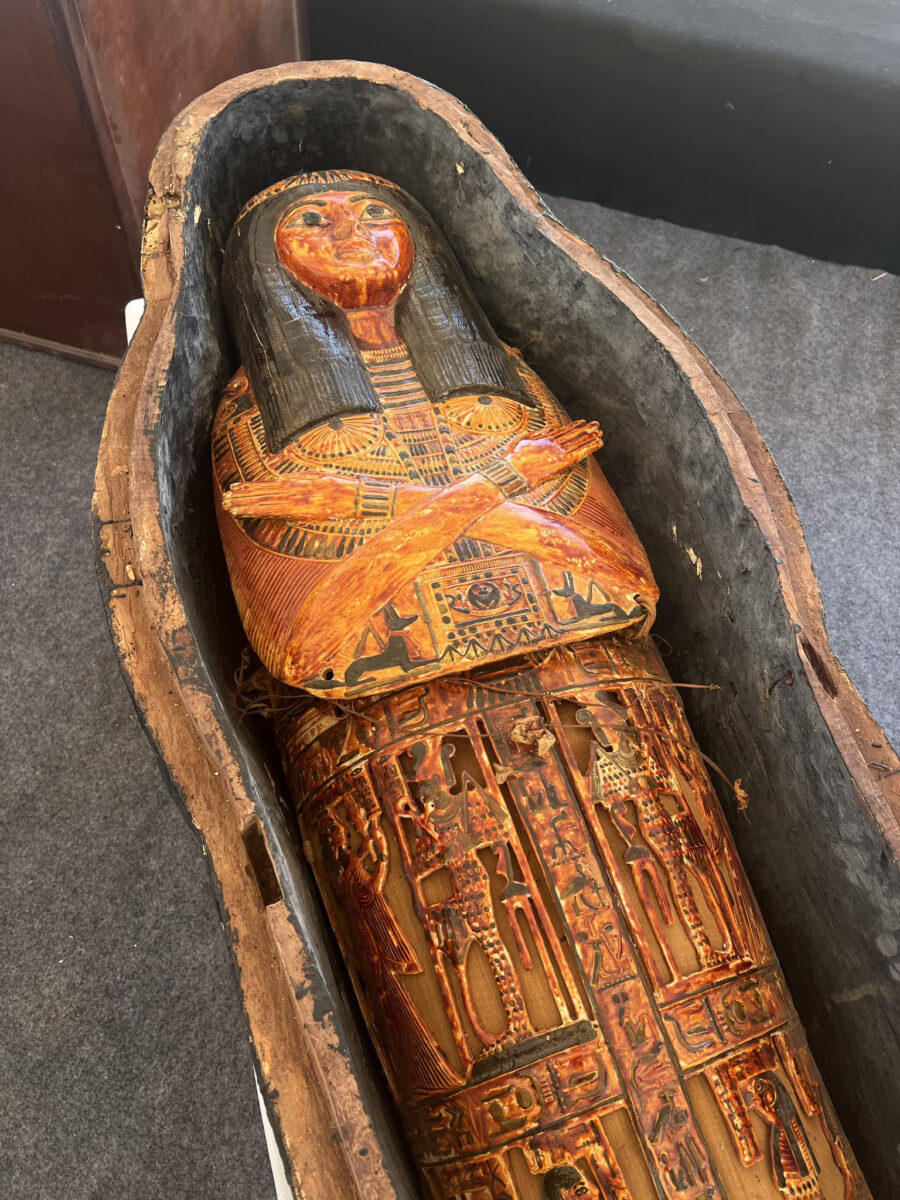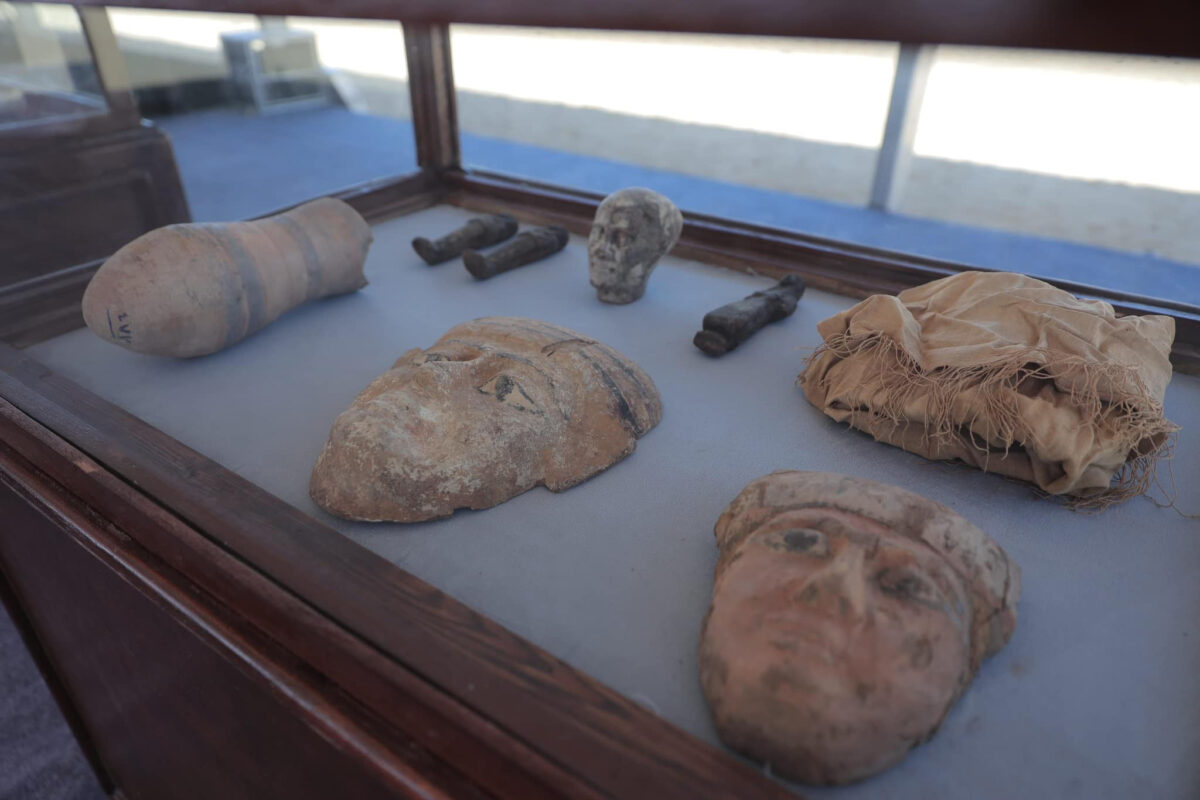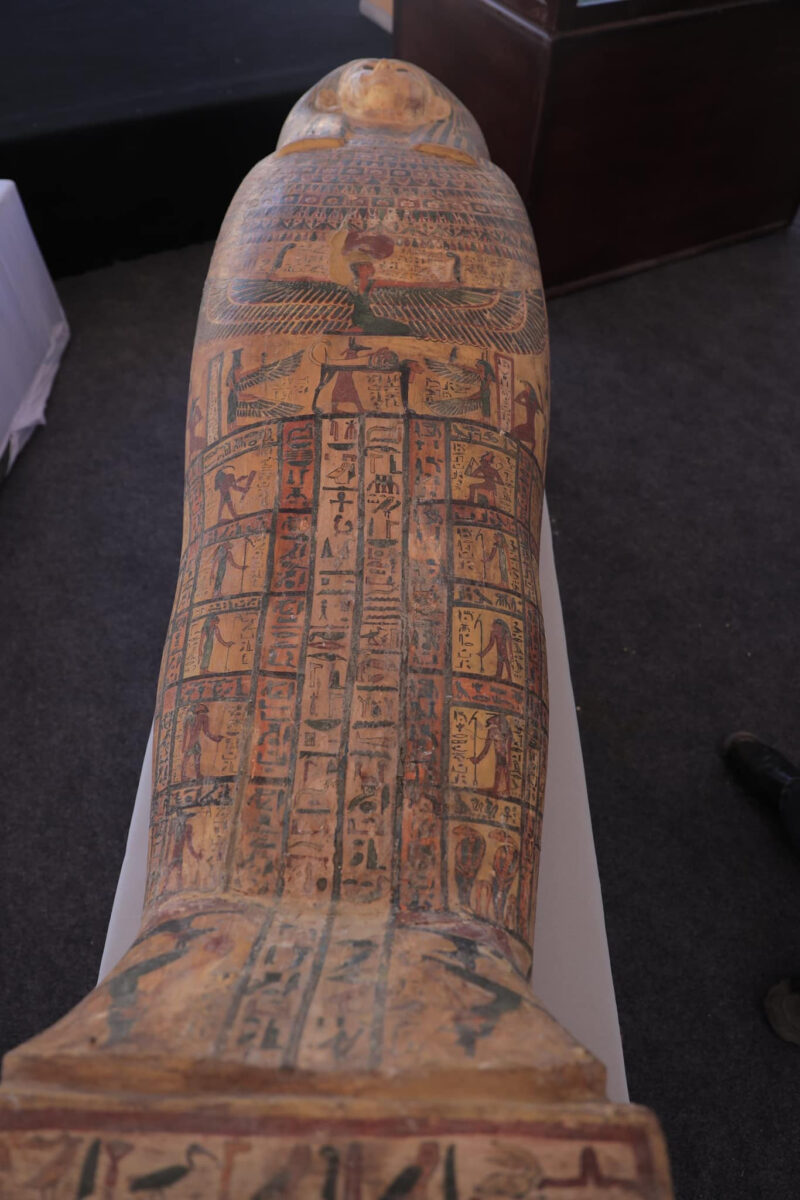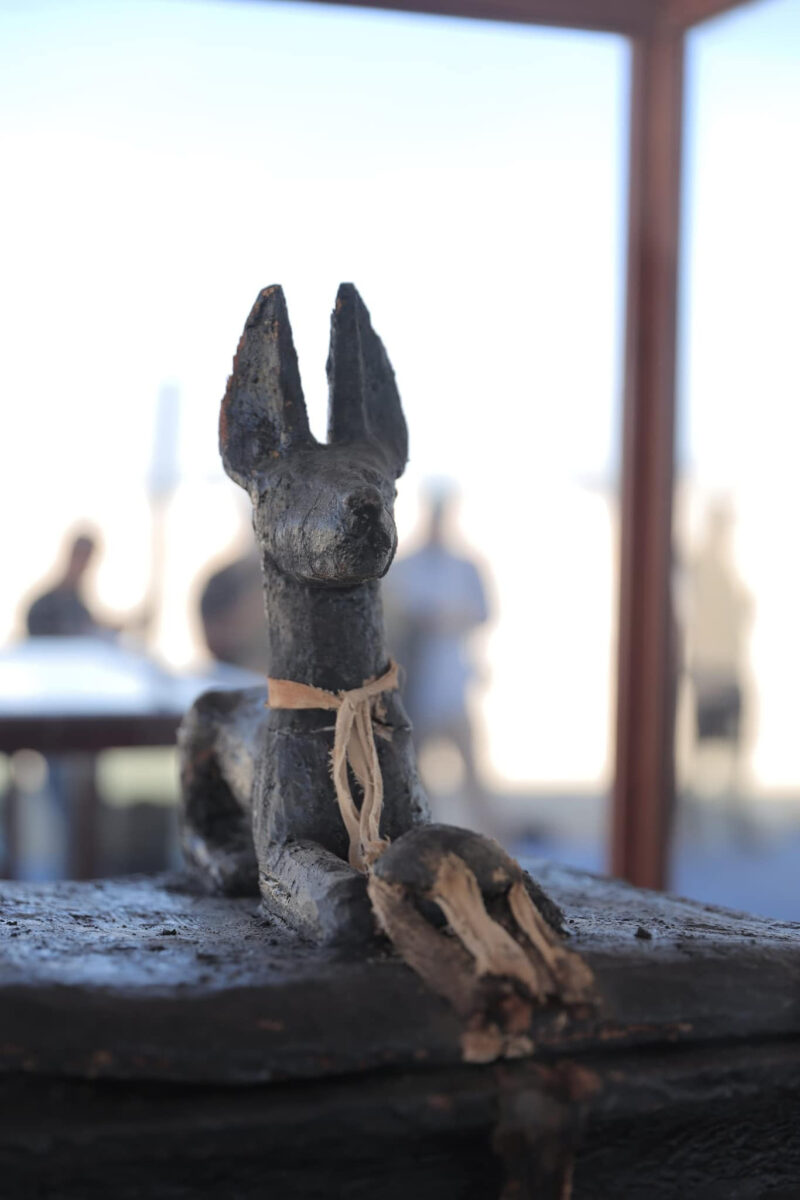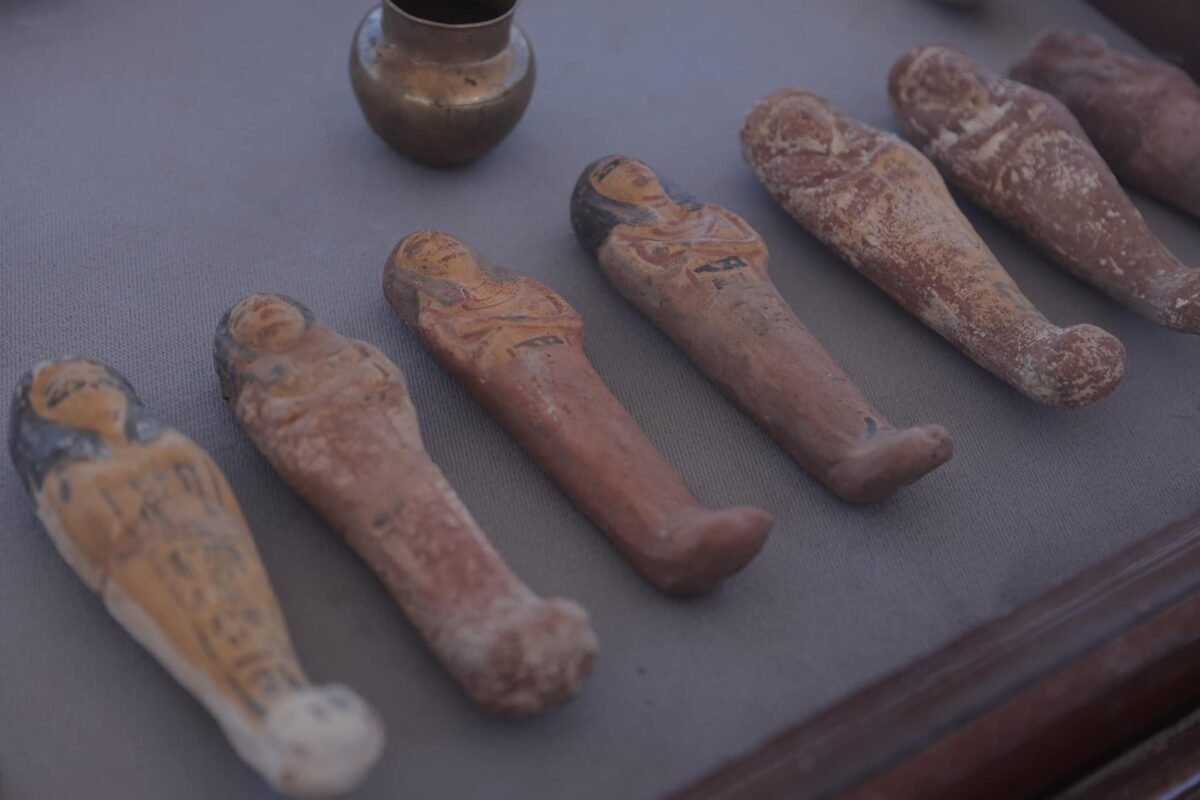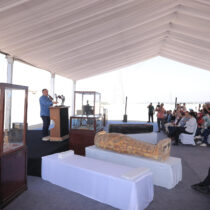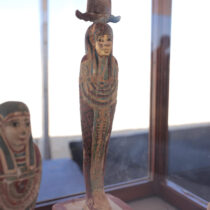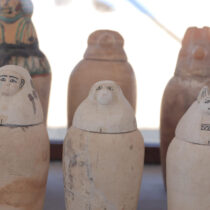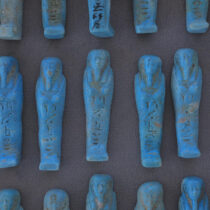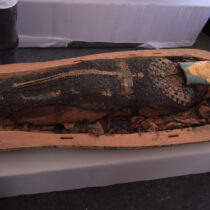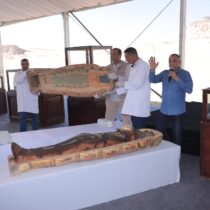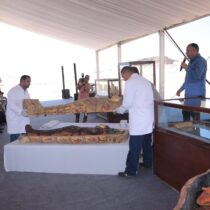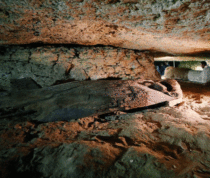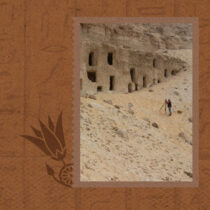A cemetery of senior officials and priests of the New Kingdom has been revealed in Ghoreifa near the site of Tuna El Gebel, in the central Egyptian governorate of Minya. According to the press release by the Ministry of Tourism and Antiquities, finds from the cemetery included the first complete papyrus ever found in the area.
The finds were announced in a press conference organized in Ghoreifa by the Ministry of Tourism and Antiquities.
During the conference, Dr. Mustafa Waziri spoke about the character and the most important finds from the archaeological site of Ghoreifa, where the Egyptian archaeological mission of the Supreme Council of Antiquities has been working since 2017 under his direction. He then spoke about the details of the recent discoveries made during his team’s seventh season in the area, which began last August. As Dr. Waziri pointed out, the New Kingdom cemetery included many rock cut tombs. The hundreds of archaeological finds include amulets, ornaments, and stone and wooden coffins with mummies, in addition to a group of clay and wooden ushabti statues made for several senior officials, such as Djehutymes who holds the title of supervisor of the bulls of the Temple of Amun, and Lady Nany who holds the title of Djehuty’s wife.
Dr. Mustafa Waziri explained that this is the first time that a New Kingdom cemetery has been found in the fifteenth Nome (region) of Upper Egypt. Cemeteries of the Old Kingdom, the First Intermediate Period, and the Middle Kingdom have been found previously in this region, east of the Nile, in the area of Sheikh Said and Deir al-Bersha, where rock cut tombs were to house the region’s rulers and senior officials.
The location of the region’s New Kingdom cemetery was not known until the Egyptian mission began its excavations last August. Still, archaeological evidence points that part of this cemetery had been reused in later eras, as Late Period objects have been uncovered. These include ushabti statues of various sizes and materials, canopic jars made of alabaster, limestone, and faience, thousands of amulets, and many stone sarcophagi. The wooden sarcophagi (coffins) are human shaped, and some are engraved and colored. Mummies in a good state of preservation and some stone and wooden statues have been found in the sarcophagi.
One of the burials contained an engraved and colored wooden coffin inscribed for Lady Tadiaisa, daughter of Iret-heru, the high priest of Djehuti in Ashmunein. Next to her were two wooden boxes containing her canopic vessels, in addition to a complete set of ushabti statues and a statue of Ptah Sokar.
Dr. Waziri pointed out that a scroll was also uncovered. It represents the first complete papyrus found in the Al-Ghoreifa area. Preliminary studies indicated the papyrus was approximately 13-15 meters long. It contains passages of the Book of the Dead and is in very good condition. Following conservation, it is to be displayed in the Grand Egyptian Museum.
Dr. Waziri concluded his speech by thanking all colleagues working at the Supreme Council of Antiquities, especially restorers and archaeologists in the Al-Ghoreifa area, for their efforts and contribution in announcing this important discovery.
It is worth noting that the Egyptian archaeological mission began its work in Al-Ghoreifa in 2017, to determine the location of the New Kingdom cemetery of the fifteenth Nome. During the previous archaeological seasons, the mission was able to find the late-era cemetery in the far north of the region. This cemetery is represented by burial shafts dug in the rock leading to the burial chambers. Portable finds from there contained stone and wooden coffins, more than 25 thousand ushabti statues, a large number of canopic vessels, thousands of amulets, and some stone and wooden statues, a large part of which have been displayed in Egyptian museums.
